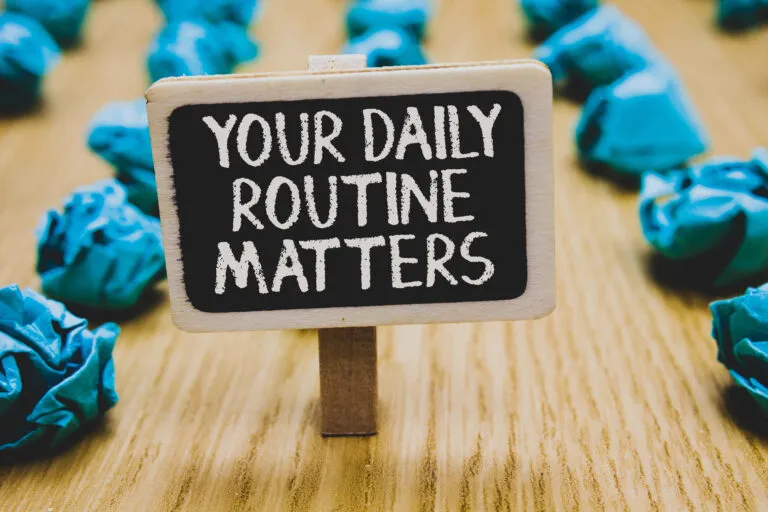Teaching your children good habits for using social media can have lasting positive benefits to their emotional and behavioural development. Knowing how to navigate this territory, however, can have its challenges. If you are a parent with children reading this, know you are not alone! Below you will find five simple steps outlined for effective ways to support healthy habits for your growing children to participate and socialise on various social media platforms. Regardless of your personal views on social media, keeping yourself informed is a practical and effective way of navigating this with your children.
Some of the popular social media apps currently used by children are Snapchat, TikTok, YouTube, Instagram, Facebook, Discord and WhatsApp. The ACMA recently reported that 60% of all 8–12-year-olds were active users of social media platforms and held their own accounts. Interestingly though (and this is not the good news), the current age recommendation for most social media apps is 13+.
This means many children using social media are under the recommended age.
Research emerging out of the USA and UK is providing evidence to inform guidelines for parents to help keep their children safe online when socialising with friends. And this is good news! Awareness of the risks and vulnerabilities for children is the first step.
Risks for Children
- Online cyberbullying: Cyberbullying occurs in different ways. It can be through messaging/chat, name-calling, being excluded from chat groups, sharing photos without permission, hurtful comments and or creating fake accounts in someone’s name to trick or humiliate them. Knowing how cyberbullies victimise children will help you better monitor their online activity. We know online bullying is more likely to happen OUTSIDE of school hours, and it is more difficult for children to defend themselves or getaway when online. Social media platforms blur the boundaries of time at school and time at home. Bullied children can find it very difficult to find sanctuary away from the experiences at school, given the social connections continuing online, after school hours.See Cyberbullying: spotting the signs and helping your child for more comprehensive guidance.
- Privacy: Be aware that online predators exist. They use complex technologies and strategies to connect and build trust and relationships with children.Use privacy settings and parental controls to help manage the information your children can share and whom they are sharing with.
- Increased symptoms of depression and anxiety: Spending increased time online and less time socialising face to face with friends, feeling isolated due to online bullying and constant comparison-making with others are risks factors for anxiety and or depression.For girls especially, photos can be harmful as they set up unrealistic standards of beauty.
- Lack of understanding: Another risk is the general lack of understanding children have for what they think is OK and not OK to post online. For example, sending an image privately to a trusted friend, who then, without thinking, re-posts it publicly, results in loss of control of that image. In addition, understanding the permanence and longer-term implications for the content shared can be challenging for children because they can easily get caught up in the moment with fast-paced messaging, posting and clicking.Developing skills for allowing time and consideration for the consequences of actions before doing something are only in very early development stages for children.
Five Steps to Keep your Children Safe on Social Media
1. Talk with your children: Take the time to sit down and talk with your children about what they need to be aware of at different stages and ages as they are growing and engaging in various types of online socialising.Let them know they can approach you to talk and problem-solve together.
Whether they are unsure about something that has happened, what to do or are being treated poorly or experiencing cyberbullying, let them know you can help.
2. Educate yourself: Staying up to date on all the various social media apps can be daunting for some parents. Even the most tech-savvy parents (and active social media users!) can be caught by surprise not knowing the latest app their child is using!Don’t worry – there are excellent resources, freely available and updated frequently to help with this.
Most schools now teach children the skills and knowledge needed for effectively using digital technologies and being good digital citizens. Partnering with your child’s school can help make sure you cover all areas of your child’s online participation.
3. Limit usage and use parental controls: Check age recommendations and set the privacy setting for the apps your child is using (or asking access for). Nearly all the leading social media platforms have guides for parents to follow to set accounts up appropriately for their age. Ensure their profiles are listed as private and not publicly available. Encourage your children to socialise in real-time with friends, are keeping active after school or on weekends and engage in non-screen-based interests and hobbies. Having an easy-to-read list of non-screen-based activities up on the wall can also help spark ideas!
For children in Year 5 and above, we strongly encourage using parental controls to make it easier to manage your children’s internet access and help them distinguish between homework and social media. Parental controls are software tools that allow parents to filter, block, set time limits, restrict website access and monitor activity.
4. Agree on rules and consequences: For younger children, you can set the rules and time limits without much discussion. However, when children get older, it is essential to discuss and agree on the rules and consequences. Some families like to write the agreed rules out on a poster and hang it in the kitchen, so everyone can see it and remember the rules.
5. Model good online behaviour and habits: Children learn from watching the adults around them. Be mindful that what you are doing is what you are teaching. Practice having periods in your day and evening with no devices and social media interactions. Try actively nurturing your interests, hobbies and friendships in real-time offline, and this can help your children learn and develop their own too.Social media has blurred into many areas of day to day lives for ALL of us. Boundaries that use to separate school, work and friendships are no longer defined by places or events. The economy of likes, alerts, comments and ‘fear of missing out’ can put children’s naturally fragile sense of self under enormous pressure. Finding peace at the end of a school day is difficult with the endless noise of multiple conversations and threads ongoing into the evening and night.
Be creative, and even have some fun, with ways that can support you and your children in creating new habits or improving existing habits. Get your children involved too. For example, they could help by making a list of the dos and don’ts for posting information or a list of what is and isn’t cyberbullying. Then, hang them up where they displayed for easy reminders.
Conclusion
Remember that teaching your children good habits for using social media can have lasting positive benefits to their emotional and behavioural development. Children are not going to like or thank their parents or teachers for online limits being set. Support your children by talking with them about what to stay aware of using social media and that you are there to help and support them. Check and set the privacy settings, limit usage and learn about which parental control software you can use that best supports your children and technology types. If you have any ongoing concerns or questions about your child’s wellbeing, we encourage you to talk with your GP and or get in touch with our clinic.
Resources:
https://www.esafety.gov.au/key-issues/esafety-guide
https://www.esafety.gov.au/parents/skills-advice/taming-technology


